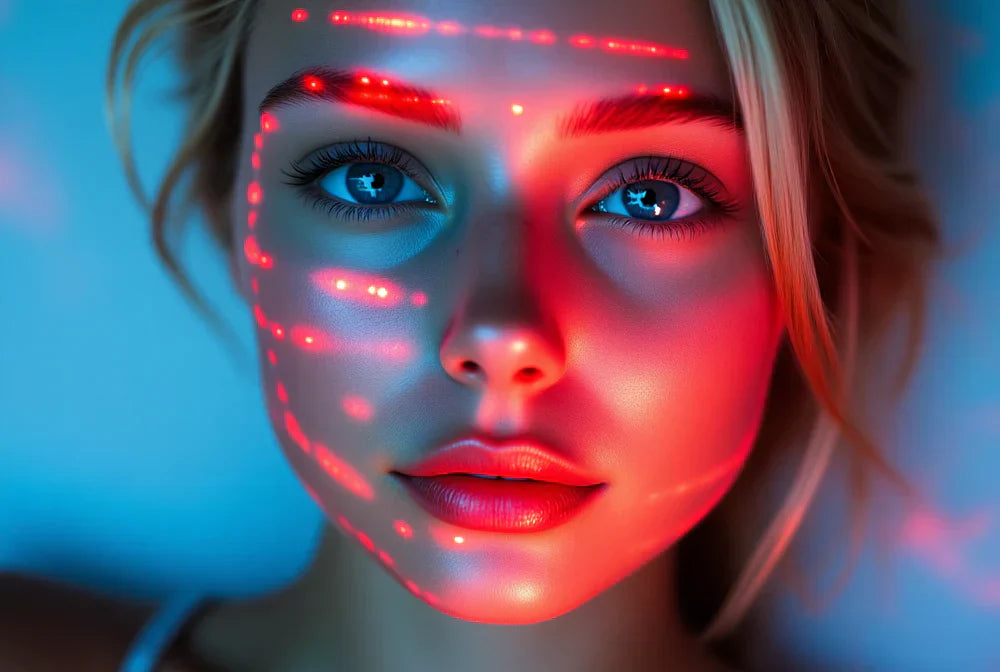Understanding your skin type is the cornerstone of any effective skincare routine. Whether you're a skincare novice or a seasoned enthusiast, knowing your skin type empowers you to choose products that enhance your natural beauty and address specific concerns. With the right knowledge, you can transform your skincare journey from a confusing maze into a clear path toward radiant, healthy skin. This guide will illuminate the steps to accurately determine your skin type, setting you on a confident course to achieving your skincare goals.
Why Is It Important To Know Your Skin Type?
Knowing your skin type is essential because it serves as the foundation for crafting a skincare routine that truly meets your unique needs. Each skin type—whether dry, oily, combination, normal, or sensitive—has distinct characteristics and requires specific care to maintain its health and vitality. By understanding your skin type, you can select products that enhance your skin's natural balance, effectively address concerns such as acne, dryness, or sensitivity, and prevent potential issues caused by using unsuitable products. This knowledge not only optimizes the effectiveness of your skincare regimen but also empowers you to make informed decisions, ultimately leading to a healthier, more radiant complexion.
How To Determine Your Skin Type
Determining your skin type is a straightforward process that can significantly enhance your skincare routine. Follow these steps to accurately identify your skin type:
-
Start with a Clean Slate: Begin by washing your face with a gentle cleanser to remove any makeup, dirt, or oils. Pat your skin dry with a clean towel and avoid applying any skincare products immediately afterward.
-
Wait and Observe: Allow your skin to rest for about an hour. During this time, refrain from touching your face or applying any products. This waiting period will give your skin time to return to its natural state, free from external influences.
-
Assess Your Skin's Condition: After an hour, examine your skin in a well-lit mirror. Pay attention to how it feels and looks across different areas of your face.
-
Oily Skin: If your skin appears shiny and feels greasy, particularly on the forehead, nose, and chin (the T-zone), you likely have oily skin.
-
Dry Skin: If your skin feels tight, rough, or flaky, especially on the cheeks, you may have dry skin.
-
Combination Skin: If you notice oiliness in the T-zone but dryness on the cheeks, you probably have combination skin.
-
Normal Skin: If your skin feels balanced, not too oily or dry, and has a smooth texture, you likely have normal skin.
-
Sensitive Skin: If your skin appears red, irritated, or reacts easily to products or environmental factors, you may have sensitive skin.
-
Confirm with a Blotting Sheet Test: For further confirmation, press a blotting sheet gently on different areas of your face. Examine the sheet for oil residue.
-
Oily Skin: Significant oil on the sheet, especially from the T-zone.
-
Dry Skin: Little to no oil on the sheet.
-
Combination Skin: Oil from the T-zone but not from the cheeks.
-
Normal Skin: Minimal oil, evenly distributed.
-
Sensitive Skin: This test may not be as effective, but sensitivity signs should be noted from the previous step.
By following these steps, you can confidently determine your skin type and tailor your skincare routine to meet its specific needs, paving the way for healthier, more radiant skin.
Can Your Skin Type Change Over Time Due To Age?
Yes, your skin type can indeed change over time due to age and various other factors. As we age, our skin undergoes numerous physiological changes that can alter its characteristics. For instance, hormonal shifts, particularly during puberty, pregnancy, or menopause, can significantly impact oil production, potentially transforming oily skin into a more balanced or dry type. Additionally, the natural aging process often leads to a decrease in collagen and sebum production, which can make skin drier and more prone to fine lines and wrinkles. Environmental factors, lifestyle changes, and skincare habits also play a crucial role in these transitions. Understanding that your skin type is not static but rather dynamic allows you to adapt your skincare routine to meet its evolving needs, ensuring continued health and vitality throughout the years.
What Is My Skin Type?
Here's a table chart to help you identify your skin type based on common characteristics and observations:
|
Skin Type |
Characteristics |
Observations |
|
Oily Skin |
- Shiny appearance, especially in the T-zone (forehead, nose, chin) |
- Feels greasy to the touch |
|
Dry Skin |
- Dull, rough, or flaky texture |
- Feels tight, especially after cleansing |
|
Combination Skin |
- Oily in the T-zone, dry or normal on the cheeks |
- Experiences both oiliness and dryness |
|
Normal Skin |
- Balanced, neither too oily nor too dry |
- Smooth texture |
|
Sensitive Skin |
- Prone to redness, irritation, or reactions |
- May feel itchy or burn |
This table provides a quick reference to help you determine your skin type by matching your observations with the listed characteristics. Once you identify your skin type, you can tailor your skincare routine to address its specific needs effectively.
How Are Skin Types and Red Light Therapy Connected?
Red light therapy is a non-invasive treatment that can benefit various skin types by promoting skin health and addressing specific concerns. This therapy uses low-level wavelengths of red light to penetrate the skin, stimulating cellular activity and enhancing collagen production. For oily and acne-prone skin, red light therapy can help reduce inflammation and minimize breakouts by targeting the sebaceous glands. Those with dry or sensitive skin can benefit from its soothing effects, as it aids in reducing redness and irritation while improving skin hydration. Combination and normal skin types can also experience enhanced skin tone and texture, as the therapy supports overall skin rejuvenation. By understanding your skin type, you can better tailor red light therapy sessions to maximize its benefits, ensuring a more radiant and balanced complexion.
Should I Use a Specific Red Light Therapy Wavelength Based On My Skin Type?
While red light therapy is generally beneficial across all skin types, selecting specific wavelengths can optimize results based on individual skin needs. Typically, wavelengths between 630 to 660 nanometers are effective for surface-level skin concerns, such as reducing inflammation and promoting collagen production, making them suitable for sensitive or dry skin types that require gentle care. For deeper penetration, wavelengths around 810 to 850 nanometers can target underlying issues like acne or more pronounced signs of aging, which can be particularly beneficial for oily or combination skin types. By aligning the wavelength with your skin type and specific concerns, you can enhance the efficacy of red light therapy, ensuring a tailored approach that supports your journey toward healthier, more vibrant skin.
Tips For Using Red Light Therapy Based On Your Skin Type
-
Oily Skin: Use red light therapy to help regulate oil production and reduce acne. Focus on wavelengths that penetrate deeper to target sebaceous glands effectively.
-
Dry Skin: Opt for shorter sessions to prevent over-drying, and combine therapy with a hydrating serum to enhance moisture retention and soothe the skin.
-
Combination Skin: Tailor your sessions by focusing on areas with specific needs, such as using more intense treatment on the T-zone and gentler care on drier areas.
-
Normal Skin: Maintain a balanced routine by incorporating red light therapy as a preventive measure to support collagen production and overall skin health.
-
Sensitive Skin: Start with lower intensity and shorter durations to minimize the risk of irritation, gradually increasing as your skin builds tolerance, and always follow with a calming moisturizer.
Conclusion
Understanding your skin type is a transformative step in your skincare journey, empowering you to make informed decisions that cater to your skin's unique needs. By accurately identifying whether your skin is oily, dry, combination, normal, or sensitive, you can select products and treatments, such as red light therapy, that enhance your skin's health and appearance. As your skin evolves over time, adapting your routine ensures that you continue to nurture it effectively, embracing changes with confidence and optimism. With the knowledge and tools to support your skin's well-being, you are well-equipped to achieve a radiant, balanced complexion that reflects your inner vitality.
Final Thoughts
Wondering how to enhance your skincare routine with the latest technology? Discover EMR-TEK, where we provide innovative solutions that integrate effortlessly into your lifestyle. Whether you're in need of a portable device for travel or a comprehensive system for home or professional environments, we have the perfect choice for you. Our blue light glasses are designed to minimize eye strain, making them an essential part of your wellness routine. Explore our collection of red light therapy products and begin your journey to healthier, more youthful skin today.
Sources
1. https://www.specdermatl.com/blog/the-importance-of-knowing-your-skin-type/
2. https://www.byrdie.com/can-my-skin-type-change-4775873
3. https://www.realsimple.com/beauty-fashion/skincare/how-to-choose-skin-care-products
Disclaimer*: EMR-TEK’s red infrared light therapy devices, blue light blocking glasses, and other products are intended solely for personal wellness and fitness use. They are not designed to diagnose, treat, cure, or prevent any disease and should not be considered medical devices. We do not make any therapeutic claims. Our products align with the FDA’s “General Wellness: Policy on Low Risk Devices” guidelines and do not require FDA clearance. Please note, EMR-TEK’s products are for personal use only and not for commercial application.*




Share:
Low-Level Laser Therapy vs Red Light Therapy: What’s The Difference?
How To Tell If Glasses Are Blue Light: Blue Light Glasses Tips